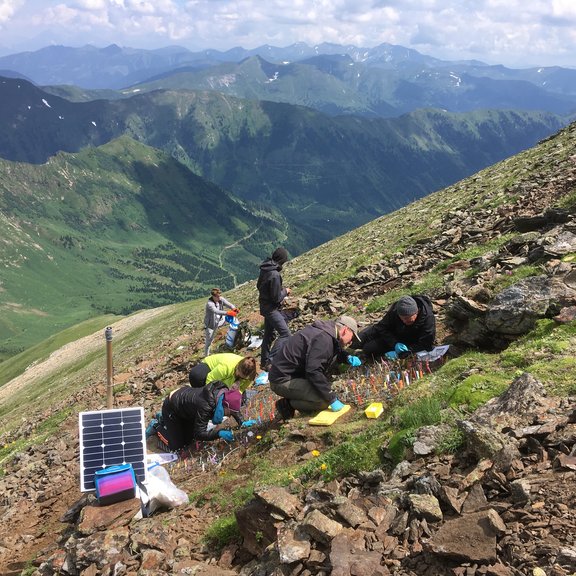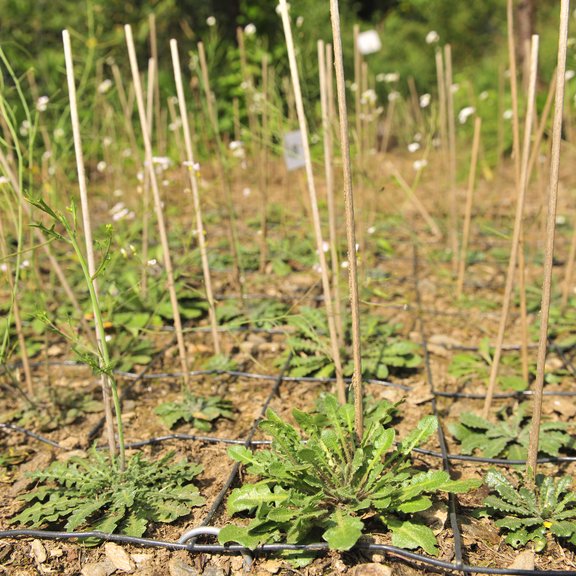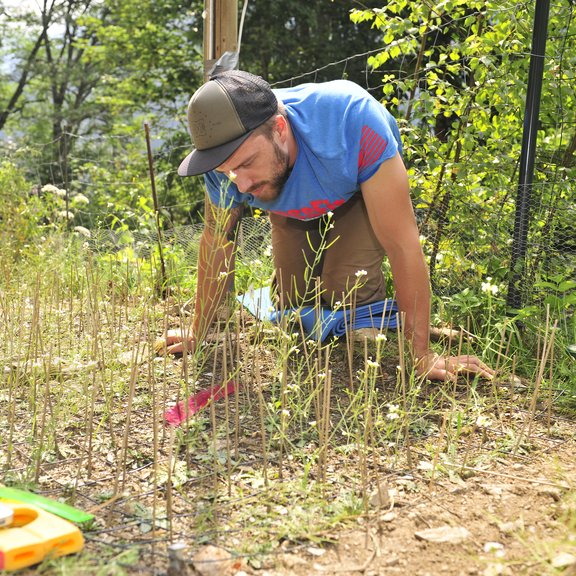Project
Disentangling evolutionary adaptation from transient acclimation to alpine environments in Arabidopsis arenosa
Project leader: Ilse Kranner
Project members: Filip Kolář (Charles University Prague), Karl Hülber (University of Vienna); Erwann Arc, Clara Bertel, Gilbert Neuner, Dominik Kaplenig, Peter Schönswetter (University of Innsbruck)
Funding: FWF - Austrian Science Fund
Duration: 2018-2022
Colonisation of new habitats by plants necessitates adjustment of morphological and physiological traits, i.e. acclimation, supported by phenotypic plasticity, and the selection pressure imposed by the new environments can result in evolutionary adaptions, leading to ecotype formation. The colonisation of alpine habitats by Arabidopsis arenosa (sand rock-cress) led to parallel evolution of populations with a distinctive alpine phenotype.
The project aims at answering two research questions: 1) What are the structural, physiological and metabolic traits that define the alpine phenotype of A. arenosa? 2) Do these traits reflect transient acclimation to alpine environments and / or are they results of evolutionary adaptation, leading to the formation of distinct alpine ecotypes? A unique set of alpine A. arenosa populations from three geographically distant mountain ranges, which evolved in parallel from their respective lowland counterparts was used in a reciprocal transplantation experiment.
The project brings together scientists from complementary research fields comprising plant biochemistry, (eco)physiology, evolution, experimental ecology, functional genomics and biostatistics, to unravel the role the environment plays in plant adaptation to climatic conditions that may lead to ecotype formation. Phenotypic anatomical, morphological and (eco)physiological traits are being integrated with biochemical data to identify key regulatory pathways implicated in acclimation and adaption processes, and their importance for downstream plant performance. In addition, the identified adaptive traits will be linked to available genome data to obtain further insights into the molecular basis of adaptation to the alpine environment. The effects of the altered environmental conditions are being assessed through in-depth studies of plant morphology, anatomy and physiology in conjunction with state-of-the-art untargeted GC-MS-based metabolite profiling and targeted HPLC and UHPLC-MS/MS analyses of selected plant metabolites.



Arabidopsis arenosa plants grown in common gardens in an alpine habitat (left), and a lowland habitat (middle and right)
Outcomes
- Kaplenig D., Bertel C., Arc E., Villscheider R., Ralser M., Kolář F., Wos G., Hülber K, Kranner I., Neuner G. (2022) Repeated colonization of alpine habitats by Arabidopsis arenosa viewed through freezing resistance and ice management strategies. Plant Biology 24: 939-949.
- Wos G, Arc E, Hülber K, Konecna V, Knotek A, Pozarova D, Bertel C, Kaplenig D, Mandakova T, Neuner G, Schönswetter P., Kranner I, Kolář F 2022. Parallel local adaptation to an alpine environment in Arabidopsis arenosa. Journal of Ecology 110: 2448-2461.
Bertel C, Kaplenig D, Ralser M, Arc E, Kolář F, Wos G, Hülber K, Holzinger A, Kranner I, Neuner G. 2022. Parallel differentiation and plastic adjustment of leaf anatomy in alpine Arabidopsis arenosa ecotypes. Plants 11.
